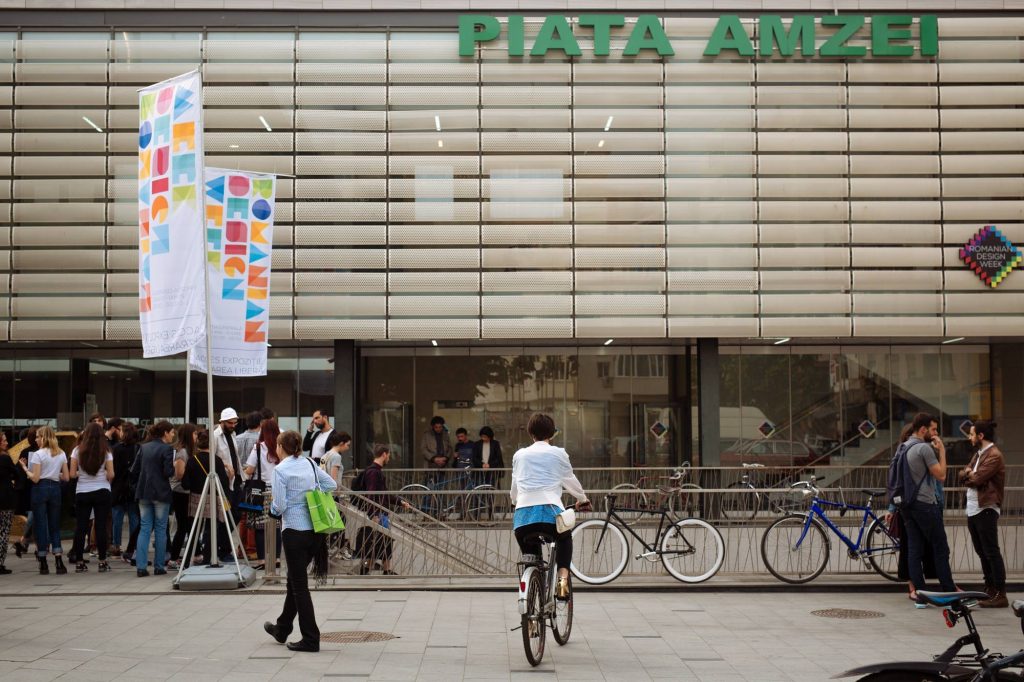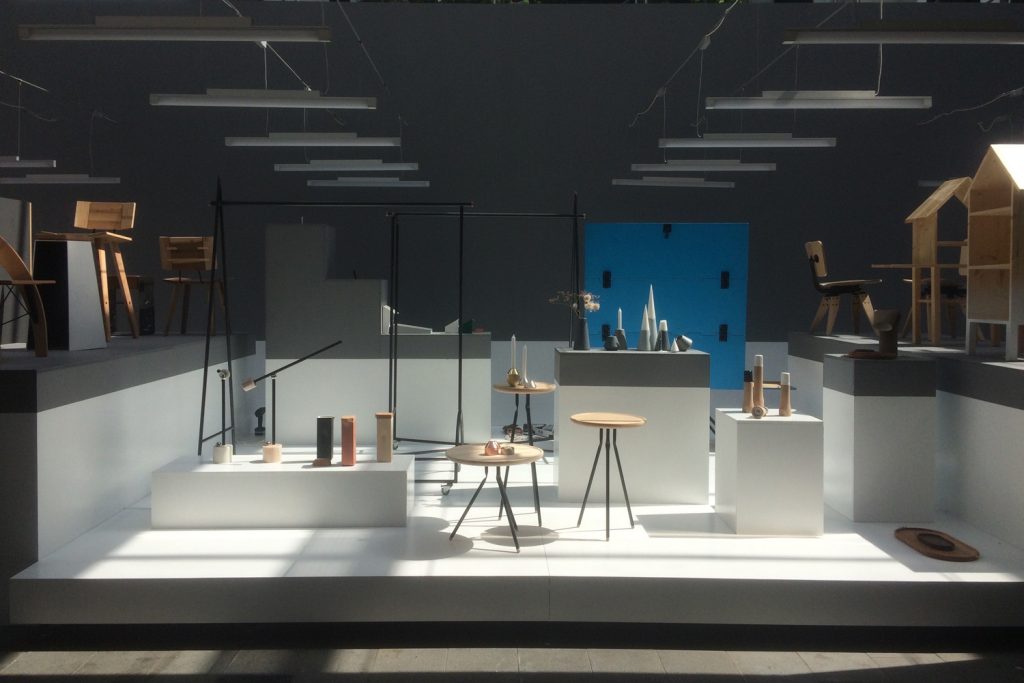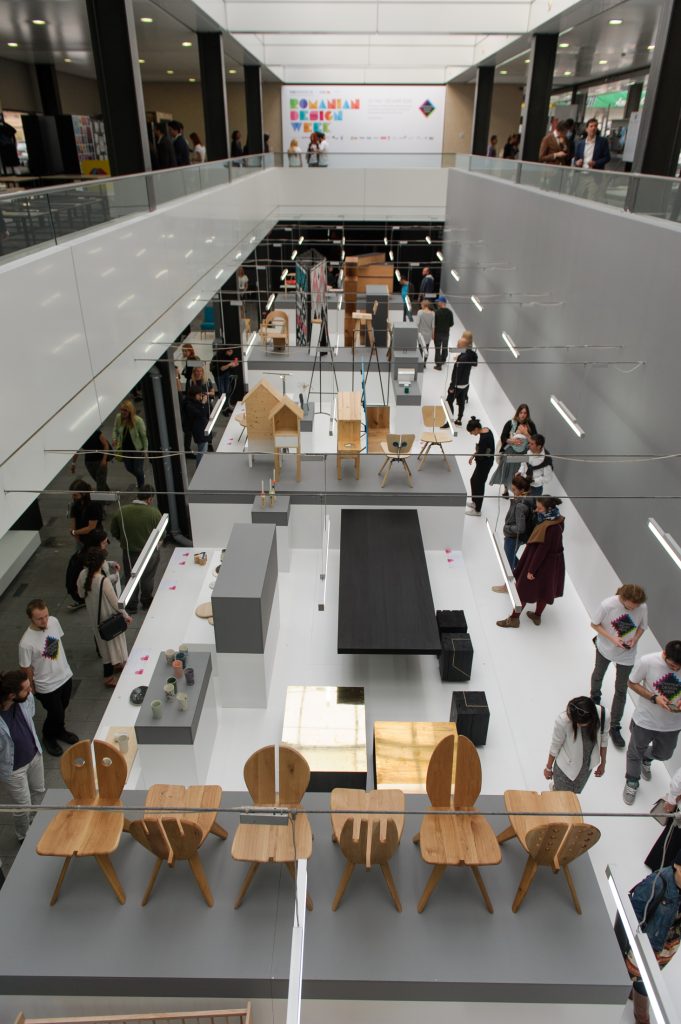:quality(80)/business-review.eu/wp-content/uploads/2021/12/Andrei-Bortun-1.jpg)
The Romanian Design Week (RDW2023) exhibition, happening May 12-28, showcases a total of 162 architecture, interior design, graphic design, illustration, product design, and fashion design projects. The main event will take place at Amzei Market, accompanied by more than 100 satellite events all over the city. BR tracked down Andrei Bortun, the CEO of The Institute, to get a look behind the scenes.
Romanian Design Week has now reached its 11th edition. How has the event changed over the years?
In the beginning, for us and for our partners, the community, and the public, the main focus was on the RDW Exhibition. But starting this year, there will be a significant increase in the number of formats being featured in the festival, each of them bringing a diversification of this project’s objectives, audiences, and sponsorships over the course of the next 10 years.
This year’s festival will see more than 160 design projects showcased at the RDW Exhibition in Amzei Market, plus more than 100 satellite events throughout the city, on routes outlined around four historical neighbourhoods in Bucharest, through the Design GO format: Design District Cotroceni, Dorobanti-Floreasca, Cartierul Creativ & Ioanid-Icoanei.
At the same time, Young Design Powered by Diploma brings in the perspective of the new generation of Romanian artists, architects, and designers, as part of a multidisciplinary exhibition. Through this new format, the public will get a glimpse into the concerns of more than 30 young creatives and recent graduates of vocational universities across Romania, who will exhibit architecture, product design, graphic design, and fashion projects.
With a line-up consisting of both well-known artists and newcomers, the RDW Social format comprises a series of parties that generate opportunities for meetings, discussions, and socialising between artists and members of the public.
The RDW Talks format highlights the most creative minds in Romania through a series of interviews with the people behind the 11th edition of Romanian Design Week. RDW Talks will be available online and on social media throughout April and May. RDW Social is a joint project of Romanian Design Week and Black Rhino Radio.
Romanian design can also be discovered and purchased at the RDW Market, a space that encourages the consumption of local design. RDW Market is a design gallery that includes a collection of capsule stores with unique items that people can discover, admire, and take home.
We’ve also changed the structure of the exhibition itself, as the participant selection process comprises two stages starting this year. In the first stage, entries were voted on by the Romanian Design Week community (participants at the 2021 exhibition, which was the last one with a call of projects). Their votes were used to select entries for the next round, where we had a pair of curators for each field who selected the final participants for the exhibition. In line with the festival’s theme—“Connections”—, we had one Romanian and one international curator for each field. They will change every year, thus allowing us to train more specialists in the project selection process.
This year we also started creating an archive of best practices, with projects that deserve recognition even if they don’t make it into the exhibition. They are displayed on the Romanian Design Week website and will be included in post-event communications. Through this approach, we aim to encourage studios with small budgets, newcomers, and young designers and promote them even outside the exhibition.

What has changed in terms of the project’s objectives over the years? Is the initial stated mission still valid today?
In the first four years, we mainly focused on bringing different professional guilds with common DNA and objectives to a single stage—both literally and figuratively: product design, fashion design, graphic design, interior design, architecture, and urban planning. The initial goal was to bring an accurate, but also comprehensive definition of what design meant, both as a process and as a result. In the following three years, we set out to increase the audience of the festival, reaching over 30,000 visitors in 2019.
Whereas in these first 7 years, we organised the central exhibition in little-known buildings around the city (Stirbei Palace, Amzei Market, Cobalcescu Garages, the Chamber of Commerce and Industry, the Telephone Palace, etc.), in the last 3, with the “help” of the pandemic, we focused on creating the cultural-creative map of the city, and with the help of Romanian Design Week, we leveraged the infrastructure offered by Combinatul Fondului Plastic, through a project called COMBINAT.
After these three years, COMBINAT has been fully discovered and it has become one of the favourite locations of creative project leaders and their audiences. Unfortunately, it’s the only such place in the city.
We intend to make good use of the experience The Institute’s teams have accumulated over the last 25 years of the foundation’s activity, as well as the experience we’ve acquired in the last 3 years around the COMBINAT project, to start a complex mission of rethinking the Amzei Market building and surrounding area.
Together with the Sector 1 City Hall, the Bucharest City Hall, specialists, and The Institute community, we will begin a design thinking process that will generate one or several scenarios about the functions this building should have in the future in order to bring significant value to the city.
In general, and particularly in the case of the Amzei Market, we believe that sustainable solutions, answers, and changes can only emerge through a close collaboration and partnership between the public sector, private sector, civil society, and local entrepreneurs.
In short, our objectives are largely the same but more diversified, and the Romanian Design Week mission is actually part of The Institute Organisation’s mission:
“Since 1998, we have been creating teams, projects, and programmes in the creative industries and civil society sector, with the aim of identifying common agendas and objectives: the independent sector, the public administration, academia, entrepreneurs, multinational companies, the mass media, professional communities, civic initiative groups. We design platforms that bring together organisations that contribute to the development of important sectors of society and the local economy. We are creating projects and programmes that will give young people in Romania the chance to rid themselves of the shortcomings that held back previous generations.
We contribute to strengthening the creative attributes of the country brand and the City of Bucharest, and we are concerned with increasing the quality of life in Romanian cities and accelerating the modernisation of Romanian society.”
“Connections” is the theme of this year’s RDW. Who is this concept aimed at? What does it take to be “connected” in this industry?
It is an invitation for anyone who wants a country and society that knows how to strategically use the creative talent of its citizens and the strength of its civil society. We need a country where dialogue and collaboration can become both a priority and an instinctual response.

What do you expect from creatives in the future, after looking at all the applications for this edition of the event?
I think it would help for them to collaborate constantly, either on projects from the same discipline or on interdisciplinary ones, through existing professional associations or other organisations that should exist, with Romanian producers who do not yet have the instinct to collaborate with designers, sticking to the old and comfortable way of doing things. They can also work with the public administration, state institutions or the academic community to try to change mentalities, rules or working methods, public perceptions or definitions.
Collaboration, as a process, is not easy to accomplish. It implies attention to the agenda of others, medium- or long-term objectives, compromise, and trust in oneself and others. But if Romania’s creative professional elites aren’t willing to try, from whom could we expect initiative towards the modernisation and growth that we all want to see?
For several years now, your role has represented an active connection between different stakeholders: designers, companies, institutions. What does the design community need to do to become connected in a functional and continuous manner? What form should this dialogue take, apart from the industry events that happen once a year?
It needs to be a paradigm shift, one that must be accepted not only by the design community but also by businesses or government agencies: cultural and creative scenes and industries should not just be helped; they should become useful.
Whether we are talking about economic objectives, country or city branding, talent retention and attraction or increasing the quality of life, these people, organisations, guilds, scenes or industries can all contribute immensely to achieving these objectives (if they exist or appear) through medium- and long-term strategies.
This change should help us realise that the discussion is not about money and budgets, but about a vision. We must address legislative or fiscal changes and collaboration processes between the public sector, academia, civil society, entrepreneurs and corporations, specialists, and local or international organisations.
In the end, we are still talking about DESIGN, about projects that should be properly formulated, followed, and constantly improved to generate a better quality of life. It’s not about designers and creatives as individuals, but about the way they can help on these fronts.

What event are you the most excited about at RDW2023?
The closing party: because it will bring together all the people who have been involved, one way or another, in making this Romanian Design Week edition come to life.
That means around 2,000 people: The Institute teams and collaborators, suppliers, volunteers, sponsors, public funders, universities, media partners and journalists, foreign guests, curators, RDW TALKS speakers, over 120 studios exhibiting works at the RDW Expo, over 150 organisations involved in RDW Design Go, artists and bartenders from RDW Social, young designers from RDW Young Design powered by Diploma, retailers from RDW MARKET, hundreds of architects from RDW Noaptea Studiourilor de Arhitectura, security guards, technicians, custodians, machinists, drivers.
All photos courtesy of RDW team



:quality(80)/business-review.eu/wp-content/uploads/2024/05/Andrei-Bortun-1.jpg)



:quality(80)/business-review.eu/wp-content/uploads/2024/06/22C0420_006.jpg)

:quality(80)/business-review.eu/wp-content/uploads/2024/06/COVER-1-4.jpg)



:quality(80)/business-review.eu/wp-content/uploads/2024/06/br-june-2.jpg)
:quality(50)/business-review.eu/wp-content/uploads/2024/07/vodafone-RO.jpg)
:quality(50)/business-review.eu/wp-content/uploads/2024/07/BeFunky-collage-37-scaled.jpg)
:quality(50)/business-review.eu/wp-content/uploads/2024/07/04_ThinkPad_T14s_6_Business_Coworking.jpg)